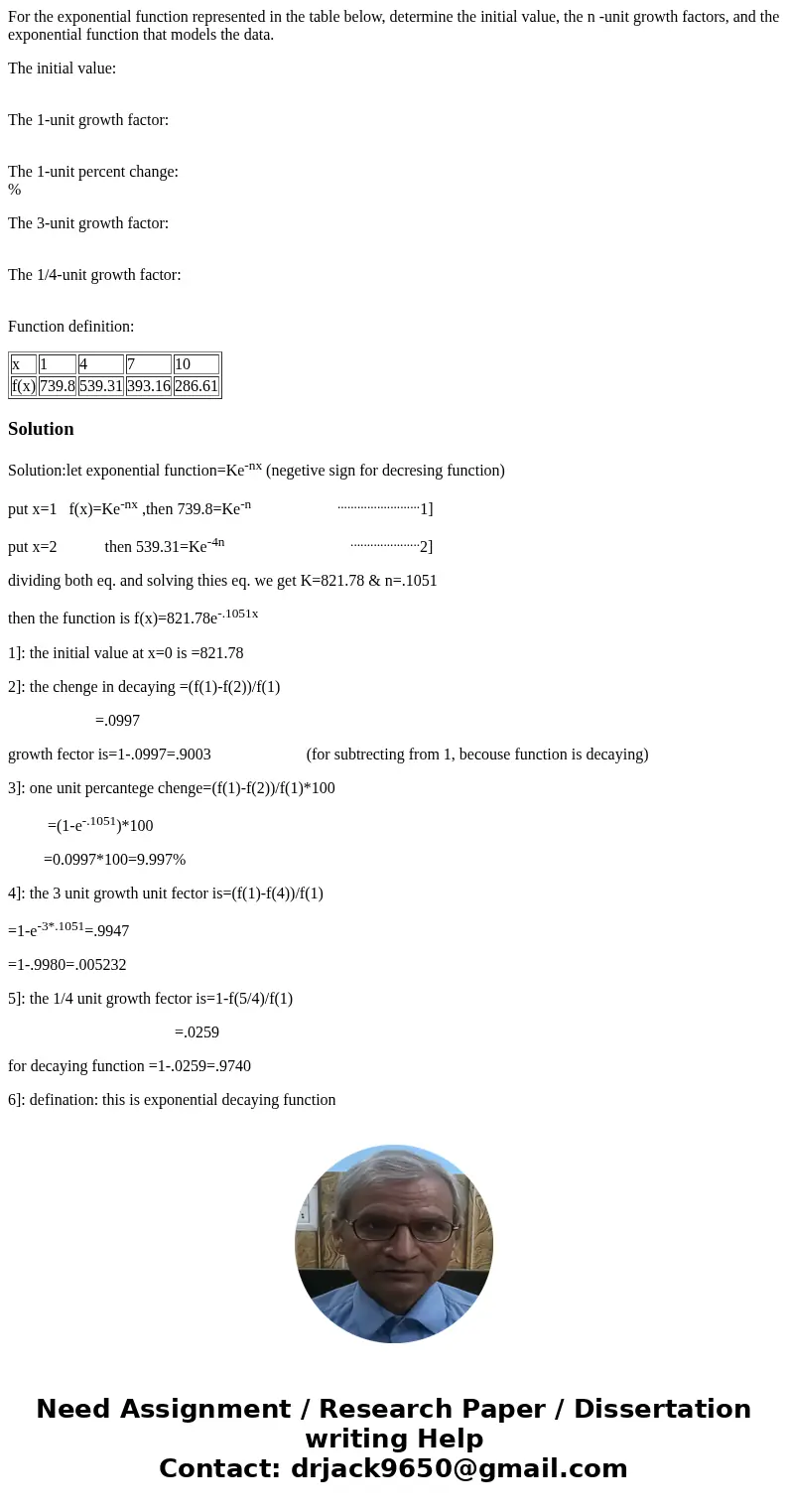For the exponential function represented in the table below
For the exponential function represented in the table below, determine the initial value, the n -unit growth factors, and the exponential function that models the data.
The initial value:
The 1-unit growth factor:
The 1-unit percent change:
%
The 3-unit growth factor:
The 1/4-unit growth factor:
Function definition:
| x | 1 | 4 | 7 | 10 |
| f(x) | 739.8 | 539.31 | 393.16 | 286.61 |
Solution
Solution:let exponential function=Ke-nx (negetive sign for decresing function)
put x=1 f(x)=Ke-nx ,then 739.8=Ke-n .........................1]
put x=2 then 539.31=Ke-4n .....................2]
dividing both eq. and solving thies eq. we get K=821.78 & n=.1051
then the function is f(x)=821.78e-.1051x
1]: the initial value at x=0 is =821.78
2]: the chenge in decaying =(f(1)-f(2))/f(1)
=.0997
growth fector is=1-.0997=.9003 (for subtrecting from 1, becouse function is decaying)
3]: one unit percantege chenge=(f(1)-f(2))/f(1)*100
=(1-e-.1051)*100
=0.0997*100=9.997%
4]: the 3 unit growth unit fector is=(f(1)-f(4))/f(1)
=1-e-3*.1051=.9947
=1-.9980=.005232
5]: the 1/4 unit growth fector is=1-f(5/4)/f(1)
=.0259
for decaying function =1-.0259=.9740
6]: defination: this is exponential decaying function

 Homework Sourse
Homework Sourse